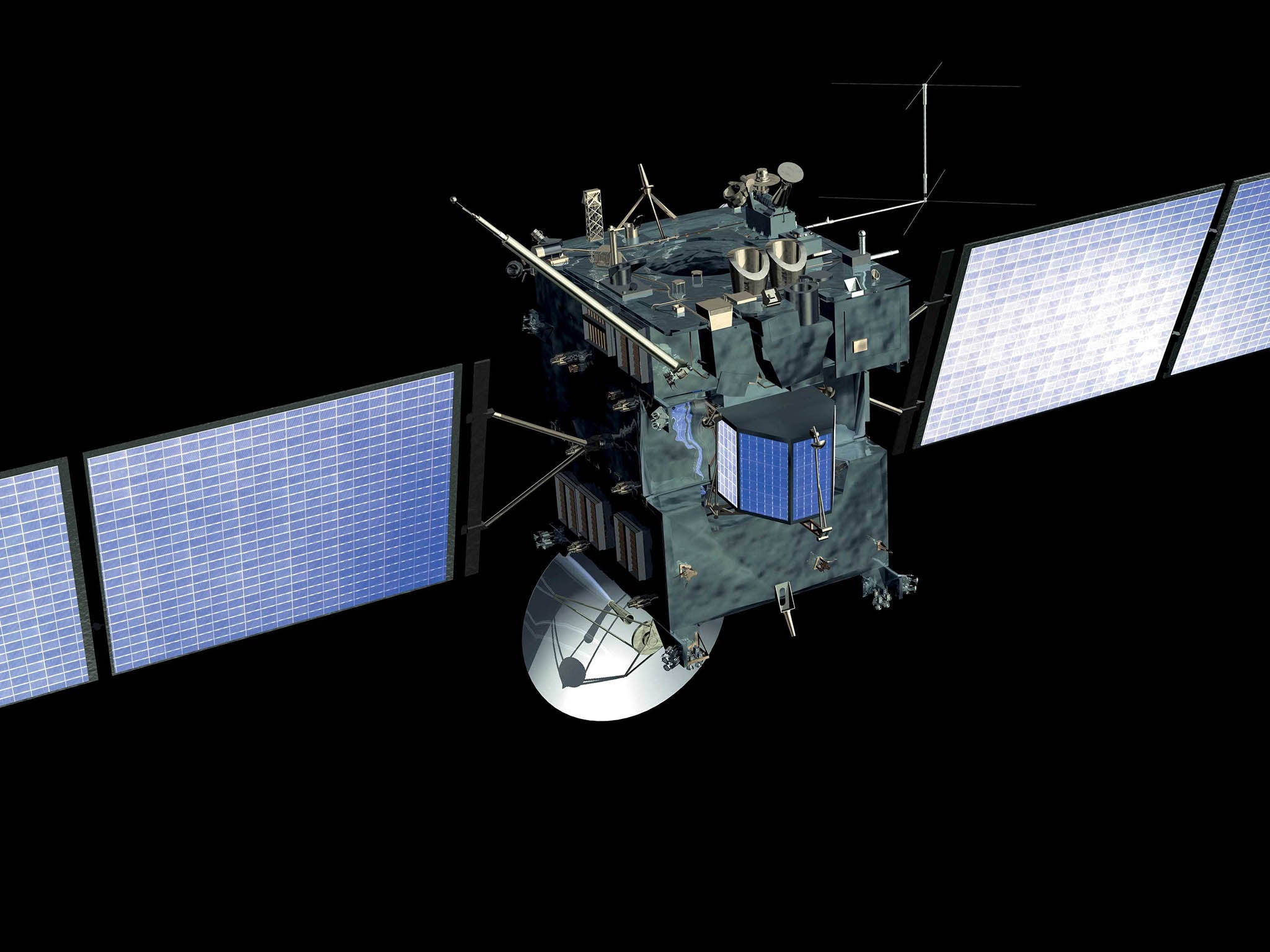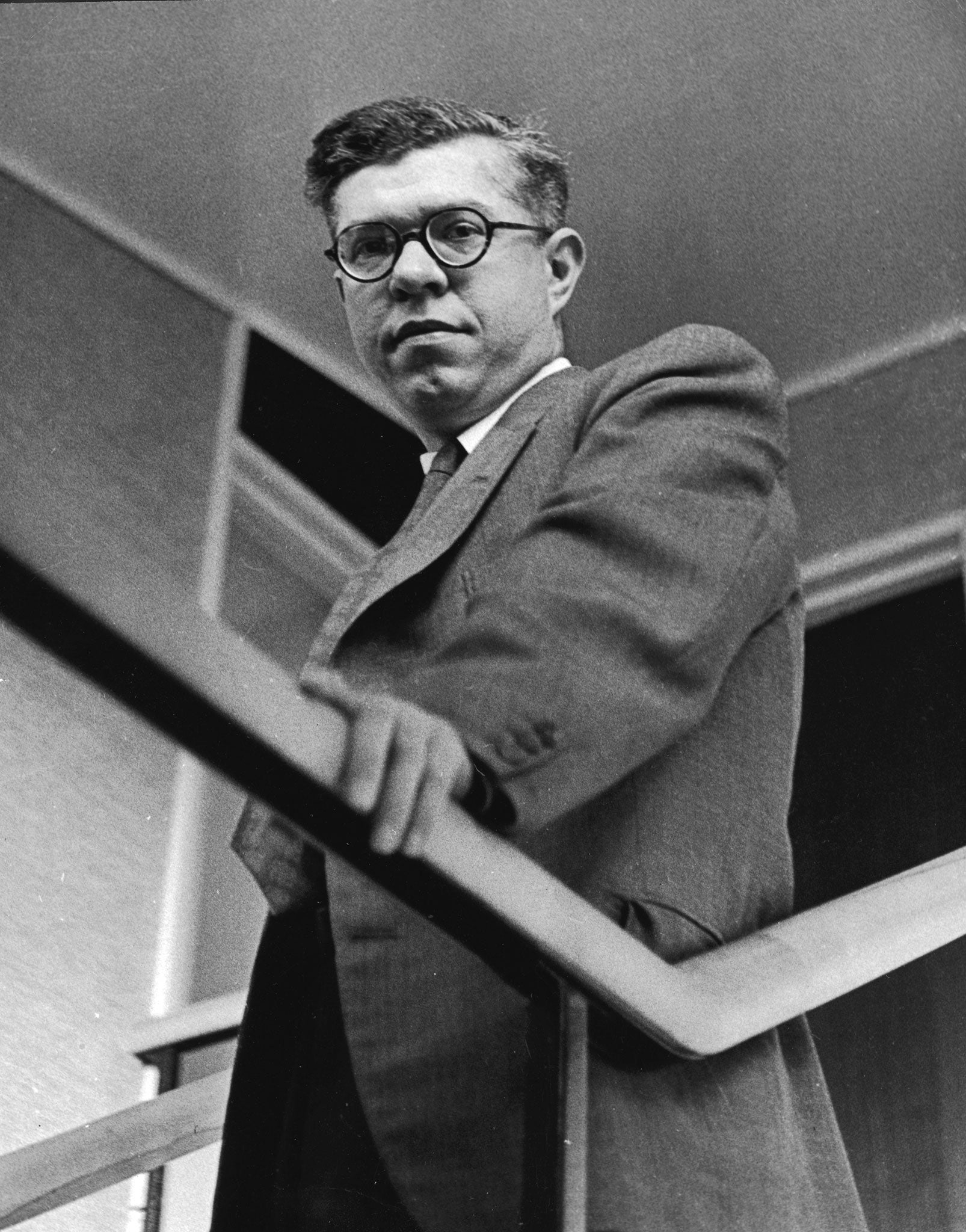According to Hoyle: How the Rosetta probe’s final act may prove a maverick scientist was right all along
Some time today the Rosetta probe will crash-land into the comet it has been studying… and perhaps gather final proof of microbial life in space. And that could mean a posthumous ‘I told you so’ from science fiction-writing Yorkshireman Fred Hoyle, says David Barnett

Your support helps us to tell the story
From reproductive rights to climate change to Big Tech, The Independent is on the ground when the story is developing. Whether it's investigating the financials of Elon Musk's pro-Trump PAC or producing our latest documentary, 'The A Word', which shines a light on the American women fighting for reproductive rights, we know how important it is to parse out the facts from the messaging.
At such a critical moment in US history, we need reporters on the ground. Your donation allows us to keep sending journalists to speak to both sides of the story.
The Independent is trusted by Americans across the entire political spectrum. And unlike many other quality news outlets, we choose not to lock Americans out of our reporting and analysis with paywalls. We believe quality journalism should be available to everyone, paid for by those who can afford it.
Your support makes all the difference.Half a century ago, a curious little novel was published entitled October The First Is Too Late. It was a slim volume of science fiction with a rather extraordinary premise; all the countries of the world suddenly found themselves in different periods of history.
Thus, people could — and the main characters did — find themselves travelling from England in 1966, the only place which had remained “contemporary”, to France in 1917, or Greece in Classical times. Other places had shifted in time — though remaining where they were geographically — to future periods; the USA has reverted to a pre-industrial state after a global crisis, Mexico is the hub of an advanced, far-future civilisation, Russia is a flat, glass-like plain at the very end of Earth’s life, billions of years hence.
It’s a fascinating conceit and a great read, and the 50th anniversary of its publication, and its aptly-seasonal title, gives us an opportunity to talk about its author: Fred Hoyle. Hoyle was, by any measure, a prodigious author of science fiction. His first novel, The Black Cloud, was released in 1957, in which an interstellar gas cloud blocks the sun’s rays from Earth, causing widespread devastation… and turns out to be a sentient alien intelligence. He wrote A for Andromeda, which became a BBC TV series in the early Sixties, about messages from space that instruct humanity how to create a form of life.

In total, he wrote around 20 novels, some co-authored with his son Geoffrey. His fiction would be enough to earn him his place in history, albeit perhaps a minor one. But aside from that, Hoyle was one of the most pioneering and groundbreaking – and controversial – astrophysicists of the 20th Century. His theories earned him the wrath of the scientific community, yet he was one of the most recognisable popular scientists of his time, the Brian Cox of his day.
Hoyle was born in 1915 in Bingley, West Yorkshire, the son of a wool trade worker. He attended Bingley Grammar School and went on to read maths at Cambridge, joining the Admiralty in 1940 to work on radar research. But it’s his work in astrophysics for which he is most notable.
It was Fred Hoyle who, while being interviewed on a BBC radio programme in 1949, coined the term “Big Bang” for the theory that our universe was created in a single, inciting incident. He then, to the horror of his peers, went on to roundly rubbish the idea. Hoyle suggested that as science couldn’t actually explain the Big Bang, it was little more than magic. He instead posited the Steady State Theory which, very simplistically, said that matter is continuously created at a constant rate that keeps the density of the universe the same as it expands.
According to Dr John Baruch, of the University of Bradford, the scientific community turned on Hoyle with such force that, he says, they tried to “destroy him”. And the Steady State Theory wasn’t the only idea to attract the fury of the mid-20th century scientists. Having dismissed the widely-held concept of the creation of the universe, Hoyle turned his attention to life on Earth.
Always handy with catchy terminology, Hoyle came up with “Panspermia”… the theory that life exists in microbes across space and that Earth was actually “seeded” by meteorites containing microscopic basic lifeforms, which eventually evolved into… well, us.
“Fred Hoyle was berated for his theories by the scientific community for a number of reasons,” says Dr Baruch. “He was dismissing theories that were widely held to be true. He also refused to play the political game. Most scientists spent their summers attending garden parties and lobbying support from the establishment; Hoyle went off to Los Angeles to work and didn’t want to get into that.”
There was also, says Dr Baruch, a highly classist element to the attacks on Hoyle. He says, “He was a Yorkshireman, he didn’t have the right sort of parents, his father worked in the wool mills. His father didn’t own the wool mills, he just worked in them. And he didn’t go to the right public school. In fact, Hoyle only got into Bingley Grammar because the headmaster spotted that he was a genius at maths and demanded he was offered a place.”
He was a hugely popular media figure and he must have got thousands of kids into science, from backgrounds like he had
But while his peers held him in contempt, the public seemed to take to Fred Hoyle in a big way. It is Dr Baruch who likens him to contemporary popular scientist Brian Cox; Hoyle appeared on BBC radio and TV a lot in the 1950s, and, says Dr Baruch, “he spoke to the common people, he put out ideas in ways they could understand and appreciate. He was a hugely popular media figure and he must have got thousands of kids into science, from backgrounds like he had.”
Knighted in 1972, he received the royal medal from the Royal Society two years later. However, perhaps one of the most devastating victories the scientific community had against Hoyle occurred in 1983, when the Nobel Prize for Physics went to William Alfred Fowler for his work on the creation of chemical elements in the hearts of stars.
Hoyle had carried out the first ever research on this nucleosynthesis back in 1946. In an obituary for Hoyle, who died in 2001, the editor of the journal Nature, John Maddox, said it was “shameful” that Hoyle had been sidelined.
Fred Hoyle had never shied away from controversy, refused to be part of – or was declined membership of – the Old Boy Network of the scientific community in the mid-20th Century, and was a popular and populist figure thanks to his media appearances and his love of writing science fiction such as October The First Is Too Late… possibly something else that earned him the disdain of his fellow scientists.
His Solid State Theory was ultimately rejected but it had played a crucial role, says Dr Baruch; because Hoyle had put forward an alternative suggestion as to the creation of the universe, it forced the scientific community to work harder to try to prove the Big Bang Theory, which they did largely thanks to the discovery of background cosmic microwave radiation in the 1960s.
As for his panspermia theory… just a discarded plot for one of his science fiction novels, perhaps. Except the idea of microbial life in space is no longer the fantasy it once was.
Indeed, today the European space probe Rosetta will attempt a crash-landing on Comet 67P/Churyumov-Gerasimenko, which it has been orbiting for the past two years since being launched on its mission in 2004. It is widely believed that the comet could be home to clusters of organic material.
The Philae lander that was dropped on to the comet failed to work properly, so the required experimentation on samples could not be carried out. Rosetta is travelling farther away from the sun and the solar panels that power it will soon fail; this last-ditch attempt to gather information is essentially a suicide mission for the probe.
But perhaps, with its dying shreds of energy, Rosetta might well gather information which will be beamed back to Earth and help unlock one of the great mysteries of the universe… and prove that the maverick, multitalented but often ridiculed scientist Fred Hoyle was on the right track.
Join our commenting forum
Join thought-provoking conversations, follow other Independent readers and see their replies
Comments